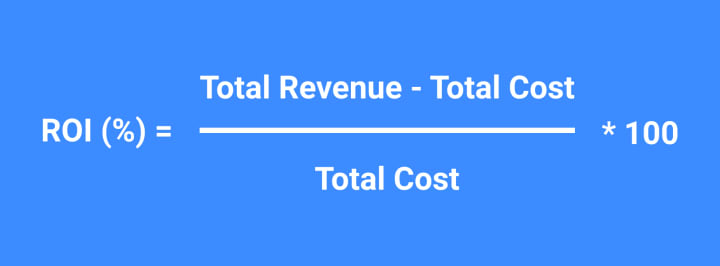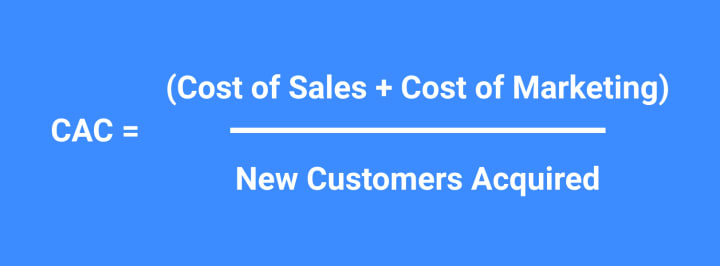
When we speak of marketing in the digital age, we no longer mean the vague feel-good awareness and light branding that we used to consider effective marketing. The digital age has made it necessary to employ highly scientific methodologies informed by very keen insights gained from the measurement of specific marketing metrics to track and predict business trends and patterns.
Marketing campaign metrics, also known as KPIs (Key Performance Indicators), are vital for monitoring and planning marketing initiatives and seeing how we might optimize them for best results. They form a sound base of knowledge by which marketers B2B business owners can formulate and implement all their business decisions.
Current technology makes it possible to automate many of these marketing functions. Even so, it will be helpful to understand the various types of digital marketing metrics and how they might be relevant to your business, which we’ll be getting into in this piece.
1. Return on Marketing Investment (ROI)
This is one of the most important marketing metrics today and refers to the calculation of how much value your marketing efforts generate. You will find your ROI by subtracting your marketing budget (social media, email, digital, print marketing, etc.) from your increased revenue or profit growth. The importance of determining this metric is to help executives decide how much they should spend on ongoing or potential future marketing campaigns.
A campaign with a negative ROI will need to be redesigned or completely shut down, while positive ROI campaigns should be extended or even expanded.
Any campaign with an ROI standing at or over 5:1 is considered particularly strong for most industries. Marketing departments will find this a powerful tool to help them justify their spending and compare what they are doing with competing organizations or brands.

2. Customer Lifetime Value (CLV)
The digital marketing and e-commerce landscape offer tight margins for profit in these hyper-competitive times, which is why companies need to find ways of maximizing their market share and revenue streams.
One of the essential metrics for marketing effectiveness is the Customer Lifestyle Value metric. This seeks to establish how much value in terms of purchases spanning their entire lifetime as a customer they represent to the company.
If, for example, a client makes purchases totaling $5,000 over the whole course of their relationship with you and you’ve spent approximately $1,000 in advertising and service costs, then the client’s CLV will be equivalent to $4,000.
The idea or usefulness of this marketing measurement is that it can give you insight into which clients to focus on when trying to maximize value, encourage growth, and maximize profits. Rather than seek out new clients in hard-to-penetrate markets, it makes more sense to develop your existing customer base.

3. Customer Acquisition Cost (CAC)
Here, an organization tries to estimate what it costs them to get a new customer or client for their goods or services. This KPI marketing metric is determined by calculating the total cost of your advertising, sales, and marketing department expenses and all related expenses divided by the number of new clients brought on board.
It is a valuable measure to determine for a business since a low cost of generating leads and subscribers will mean that it will cost you little to acquire new clients and thus generate more significant revenue and profits.
This metric has come about in recent years with the advent of the internet age, whereby consumer behavior can be tracked more efficiently, which has allowed organizations the tools to help them determine where to invest their money.

4. Click-Through Rate (CTR)
This is one of the most valuable metrics for determining the effectiveness of an advertising campaign in the digital landscape. You will measure the click-through rate by considering the number of people who clicked on a link on your email or website after seeing it on their screen. If, for example, 100 people see your advertisement but only ten people click on it, then your click-through rate will be 10% (Ad Clicks/ Ad Impressions * 100).
When you have a high click-through rate, you can deem your advertisement or marketing strategy a success since a good proportion of the people exposed to your adverts are interested enough to click on it and potentially go on to become customers.
By analyzing this metric, you will determine which adverts need to be changed and which are effectively drawing in leads and potential clients. Even though this is a general rate, it still gives a beneficial picture of your target market’s behavior and ranks high on the list of examples of marketing metrics.

5. Funnel Conversion Rate
Any helpful marketing metrics list will include the Funnel Conversion Rate. Before a potential lead is converted to a customer, they will go through certain phases. These phases can be pictured in terms of a funnel, and this is because the number of people per stage will start off being much larger than it will be when they finally become your clients.
You can calculate your conversion rate by taking the Total Sales Numbers/ Number of Leads * 100. If you had 100 clicks, inquiries/leads but only 30 people made purchases, in the end, your conversion rate will be 30%. In the e-commerce world, this is a very healthy conversion rate, with most businesses reporting conversion rates of 2-3%.
This might seem like a tremendous waste, but the digital marketing world adjusts to this reality by maximizing the spread of their advertising reach at the least cost possible so that even such conversion rates translate to substantial customer numbers. Even at a 2% conversion rate, for example, a company with 10 million leads in a month will have 200,000 clients, which might be more than enough for them to make healthy profits.
6. Cost per Action (CPA)
This refers to an affiliate marketing model whereby payment is triggered whenever a targeted user performs a particular action. Such actions vary widely in nature and may include purchase, a click, a subscription, signing up for a trial, filling a survey, making a download, and more.
This model is often referred to as Pay-Per Action (PPA) or Performance-Based Advertising since an advertiser will only have to pay once their desired action is completed. Such models call for significant conversion rates to make financial sense in most instances.
This is why most small to medium-sized businesses will utilize Cost-Per-Click (CPC) or Cost-Per Impression (CPM) Models, where low conversion levels will not be too harmful to profitability. This metric directly monitors how much a company invests in driving a particular action they desire. It is usually reported at monthly intervals.

7. Bounce Rate
In the simplest terms employed by Google themselves, website bounce rate refers to the percentage of single-page or single interaction sessions your website experiences. Here, visitors will land on a page but leave without clicking on anything or interacting with it in any way. This is why it is referred to as a ‘bounce.’
Email marketing metrics include bounce rates that refer to the percentage of emails on a marketing campaign list that the intended recipient does not see because their server turned them away.
While email campaigns might be considered high ROI advertising methods due to their low costs, high bounce rates can still render them completely ineffective. Analyzing the bounce rates experienced by your website or email landing pages will give you a good measure of how engaging these pages are, giving you an idea of where you might need to improve.
Fixing high bounce rate issues to achieve optimal performance in marketing takes a good deal of analysis and attention to determine what is putting people off. You will need to consider your presentation, prices, site structure, email copy quality, website design, and so on as you troubleshoot the matter for practical solutions.
8. Net Promoter Score
This is a very widely used marketing metric that focuses on what customers think about your product or service and whether or not they would be willing to recommend it to their family, colleagues, and friends. In most instances, the search for this information will utilize a single-question survey offered to clients.
The survey will ask the customers to choose a number ranging from -100 to 100, whereby negative numbers will indicate a negative attitude towards the company, while positive numbers show a favorable opinion.
A 100 answer will show that the customer has the highest view of the company possible, and vice versa. A Net Promoter Score is now arrived at by taking the average of these individual survey answers to achieve a reliable picture of how customers view the company in general and their willingness to recommend its services and products to others around them. Altcraft Platform has its own tool for creating NPS surveys — Forms.
This marketing measurement is a handy one as it can give companies a warning when their customers are becoming unhappy to implement changes before they lose their clients completely.
Final Thoughts
There are many key marketing metrics out there that can be used to analyze and monitor business initiatives and marketing performance. With advances in data gathering technologies and statistical methods, they keep growing in number.
To stay ahead of the pack, you must gain a deep understanding of what are marketing metrics and stay abreast of the developments occurring in this field. This is especially true if your work relates to in some way or relies on digital marketing.
By keeping track of your social, consumption, sales, and lead generation marketing metrics, you can keep your finger steadily on the pulse of your organization’s health.
About the Creator
Altcraft
Interesting and useful articles about marketing, our product and online communications






Comments
There are no comments for this story
Be the first to respond and start the conversation.